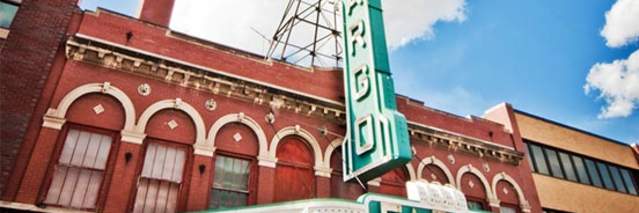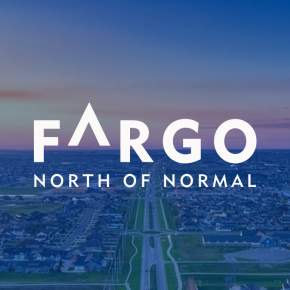Located in Downtown Moorhead, the Hjemkomst Center houses the Historical and Cultural Society of Clay County. The society's mission is to collect, preserve, interpret, and share the History and culture of Clay County, Minnesota.
We spoke with historian and Programming Director Markus Krueger to fill us in on their recent history exhibition, Stories of Local Black History. The exhibit profiled African American citizens of Fargo-Moorhead from the late 1800s to the present.
Fargo-Moorhead's African-American History in a nutshell
African American men and women were among the founders of Fargo-Moorhead in the 1870s. The story of immigrant families coming to the Red River Valley to claim farmland is well known here, and there were some African American farmers in our area. Still, it was a different profession that drew the first Black families to our town: African American men saw new cities needing a barber.
Black Barbers serve an essential role in American society today, and that role evolved from how African American men were considered the best barbers in the 1800s. Being a barber was one of the few jobs available at this time that allowed a Black man to be his own boss, make good money, own his own business, and be respected as a professional. The best barbers were known as "Tonsorial Artists," White men considered it the height of luxury to get a shave and a haircut in a First Class Barbershop run by an African American barber. Records are incomplete, but perhaps half of Fargo-Moorhead's barbers in the mid-1880s were African American, and the first African American families to move to Fargo-Moorhead were barber families.
It is a common theme in American History that parents go as far as they can so their children can go farther and their grandchildren farther. Frank Gordon ran Fargo's best barbershop in the 1890s, and in 1900 he ran for city alderman. Two of his sons became doctors. One of his grandsons was world-famous bebop Jazz saxophonist Dexter Gordon.
Other African American families followed. They found work as laborers, laundresses, cooks, and in the service industry. The barber families comprised the Black middle class of Fargo. The generation of our Black pioneers was born before Emancipation and, therefore, experienced slavery as children. Some, like Moorhead barber Felix Battles and Richland County farmer William Thornton Montgomery, escaped slavery and fought in the United States military to destroy the Confederacy, thereby eliminating the system of American slavery.
The children of the pioneers tended to find better opportunities in urban centers elsewhere during the Great Migration. Our community has always been closely linked culturally and economically to the Twin Cities, and that is where many of the families of Fargo-Moorhead's original African American community moved. Though the population of our Black community never reached zero, it did become relatively small in the middle decades of the 1900s.
Our colleges played a crucial role in re-establishing the Black community of Fargo-Moorhead starting in the 1960s. The mid-1960s was a time when young African American students were looking for opportunities outside of Historically Black Colleges and Universities, while at the same time, colleges like Moorhead State were looking to do something to help the Civil Rights Movement. International students from Africa and countries of the African Diaspora were also seeking American education. Fargo-Moorhead's colleges began recruiting Black students and faculty at this time, forming a core of educated Black professionals.
The military has also been a great driver of diversity in our region. North Dakota and Minnesota were on the front line of the Cold War. Air Force families from all across the country were stationed at the bomber bases and nuclear missile silos that popped up across North Dakota in the 1960s, and some of those families, of course, were Black. And sometimes, those military families liked the communities they found, so they sent their kids to college and made this place their home.
One unique aspect of Fargo-Moorhead's Black community is the high percentage of New Americans. Fargo-Moorhead has been a refugee resettlement community ever since the end of World War II. Changes in immigration laws in the 1990s allowed a more significant percentage of displaced people from Africa to be resettled in America. Thanks to Lutheran Social Services of North Dakota, families from South Sudan, Liberia, the Congo, Nigeria, Ivory Coast, Chad, and several other countries have found new homes in our area. Many immigrant families initially resettled elsewhere; notably, Somali families from Minneapolis have chosen to move here for jobs, school, and safe communities. Fargo-Moorhead's colleges and booming tech industry also attract smart professionals from around the world, including African countries and countries of the African Diaspora. Many Black kids attending school in West Fargo, Fargo, and Moorhead are either New Americans or first-generation Americans.
The US Census shows North Dakota's Black population has tripled in the last ten years. African Americans with centuries-deep roots in this country and immigrants looking for the American Dream are attracted to Fargo-Moorhead's good schools, jobs, and affordable housing in safe neighborhoods.
Fargo-Moorhead & the Great Migration
One of the most surprising facts when learning about our local African American History is that the Great Migration caused people to move AWAY from Fargo-Moorhead.
Before 1900, most African Americans lived in the South, in states whose economies were based on slavery before the Civil War. Starting about World War I and going into the 1970s, African American families moved away from the rural poverty and political terror of the Jim Crow system in the South. They were attracted to better opportunities in the North and Midwest urban areas.
Fargo is undoubtedly not the South – far from it! But we also didn't have enough options to keep the children and grandchildren of our original African American community here. The Twin Cities and other places offered better-paying jobs in factories. They had larger Black communities where Black men and women could make a decent living by opening their businesses or being a professional like a lawyer or dentist. So our original African American community came here at the birth of our towns decades after the Civil War, and their children left for better opportunities elsewhere during the Great Migration.
How did the "Stories of Local Black History" exhibit come to be?
A few years back, we had an exhibit from the Science Museum of Minnesota called Race: Are We So Different? We could see our community wanted to talk about subjects dealing with race and History, and we knew that as a community, we hadn't done an excellent job of having these conversations, perhaps because we didn't realize our History.
We, historians, uncovered many stories we did not know in making this exhibit, and I know there were things I thought I knew that weren't the case, and there were a lot of surprises in our History, too. Great stories that just weren't being told. And I should also say that stuff like this isn't free – a grant from the Science Museum of Minnesota helped get us started on this exhibit.
Felix Battles Project
Felix is the first known African American permanent resident of Fargo-Moorhead, called by one local newspaper "the pioneer barber of the Red River Valley." He was born enslaved, escaped slavery as a teenager, joined the US army to help defeat the Confederacy, and when Moorhead was about a year old, he made this place his home.
The Historical and Cultural Society of Clay County will be making a statue for him to raise awareness of this fascinating person, to educate people about the crucial yet intentionally-overlooked role African Americans played in winning the Civil War, and to tell people about Fargo-Moorhead's original African American community.
Learn more about this project and how you can support on the HCSCC website.
How can the Fargo-Moorhead community help?
Large portions of our community have not supported the growth of our immigrant population, as we can see from who we often elect for public office and the fact that Lutheran Social Services of North Dakota's refugee resettlement policies were so often seen as controversial.
As former-Moorhead-mayor-now-judge Johnathan Judd said in the wake of the George Floyd protests, this community still needs to have tough conversations about institutional racism and inequality. But a lot is going on that makes me optimistic. Fargo's Juneteenth celebration is growing and has a lot of energy. The fact that Johnathan Judd was elected mayor of Moorhead. Rachel Stone's work with youth in our schools. Young people make their voices heard, and people genuinely want to hear what they have to say.



